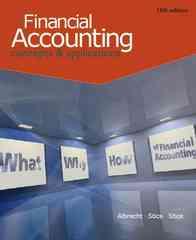Question
Do the tax file memorandum Taxpayer Information: Ted and Marvin Brown purchased an apartment building in 2005 as equal tenants in common. After a hectic
Do the tax file memorandum
Taxpayer Information:
Ted and Marvin Brown purchased an apartment building in 2005 as equal tenants in common. After a hectic decade of co-ownership, the brothers determined that their business association should be terminated and decided to get rid of the apartment building. This led to a sale of the apartment building and a division of the proceeds.
The realized gain on the apartment building for each brother was $350,000. Ted planned to recognize the gain on his share and use the net proceeds to invest in stock. However, Marvin wanted to defer any recognized gain, so he had worked with a realtor to identify property that would be eligible for 1031 like-kind exchange treatment. The realtor identified a single-family home on Lake Tahoe that was currently being rented by the owner. Marvin agreed with the choice and worked through the realtor to acquire the single-family Lake Tahoe house in exchange for his share of the apartment building. Marvin deferred all of his realized gain.
After attempting to rent the Lake Tahoe house for eight months without success, Marvin concluded that he could not continue to make the mortgage payments on both his principal residence and this rental property. To ease his financial liquidity problem, Marvin sold his principal residence for a realized gain of $190,000 and moved into the Lake Tahoe house. He reported no recognized gain on the sale of his principal residence as the sale qualified for 121 exclusion treatment.
The Internal Revenue Service (IRS) issued a deficiency notice to Marvin associated with the exchange of the apartment building for the Lake Tahoe house. The position of the IRS was that Marvin did not hold the Lake Tahoe house for investment purposes as required by 1031 (the code section on like-kind exchanges). Instead, the IRS contended that Marvin's intention was personal - to use the Lake Tahoe house as a replacement for his current residence that he planned on selling. Who should prevail?
Hint- you will find guidance from the following sources of tax authority:
Internal Revenue Code Section 1031. Be sure to cite this code section in the memorandum and explain relevant portions.
Once you have located this code section, search for tax regulations and/or court cases relevant to this issue. Be sure to cite and explain relevant sources in the memorandum. The following case may be helpful:
Patrick A. Reesink, 103 TCM 1647, T.C.Memo. 2012-118
Step by Step Solution
There are 3 Steps involved in it
Step: 1

Get Instant Access to Expert-Tailored Solutions
See step-by-step solutions with expert insights and AI powered tools for academic success
Step: 2

Step: 3

Ace Your Homework with AI
Get the answers you need in no time with our AI-driven, step-by-step assistance
Get Started


